As AI becomes a staple in academic workflows, students are embracing tools like ChatGPT, Claude and Microsoft Copilot for tasks such as summarizing resources, drafting essays and exam preparation. But while generative AI is transforming how students learn, it’s also introducing new pressures and uncertainty—especially around academic integrity, mental wellbeing, and finding trustworthy guidance.
The latest Librarian Futures Part IV report, Librarian Leadership on the AI Frontier, confirms what many librarians already suspect. Most students feel overwhelmed (57% report feeling this way often or very often), but few are turning to the library for help. Only 17% of students would turn to a librarian for AI guidance. Even fewer (8%) report having received guidance from librarians on how to use AI in their studies. How can academic librarians play a vital role in guiding students and researchers with the responsible use of AI and embed the library into emerging AI workflows?
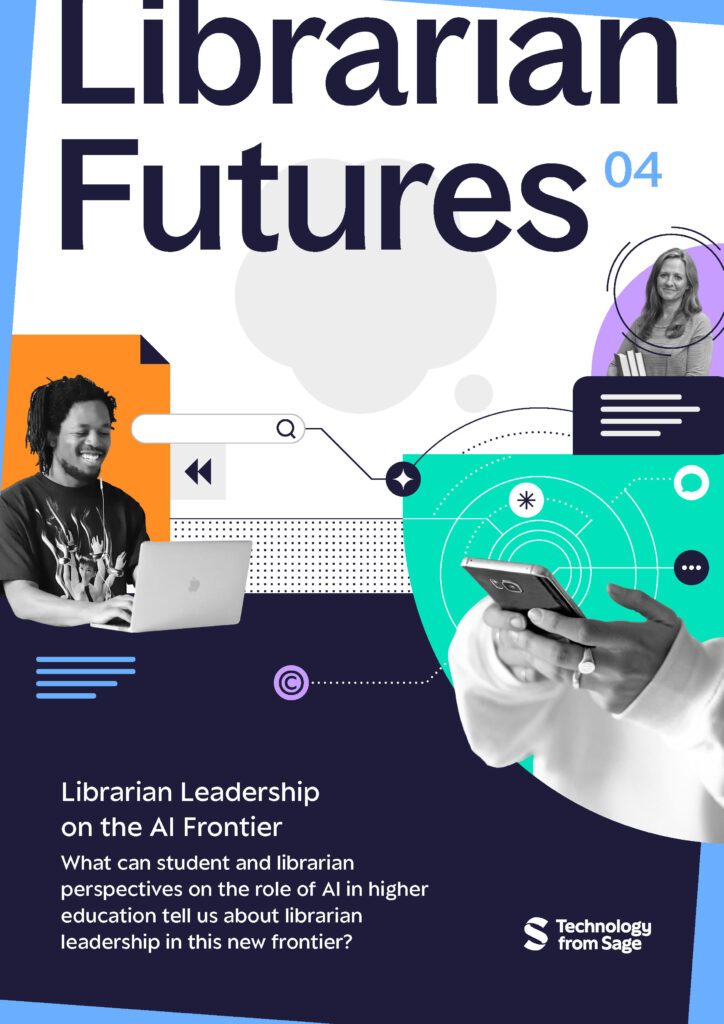
Librarian Futures Part IV, Librarian Leadership on the AI Frontier, draws on global surveys of 1000 students and 300 librarians
Discover the ways that institutions have used Lean Library, a trusted tool which streamlines access to library resources, to bridge this critical gap and bring the expertise, support, and services of the academic library directly into students’ workflows. Here’s how:
The latest Librarian Futures report found that students use multiple sites to find research in addition to the library website; 67% use Google, 55% use ChatGPT and 44% use Google Scholar. Instead of expecting students to seek out the library for help, Lean Library meets them where they are with Assist Messages (personalized messages from the library for users). For example, Lean Library can deliver a message through the pop-up with citation advice when students are browsing ChatGPT, or link to the library’s AI policy when students start their research on AI websites.
One library has deployed Assist Messages on multiple AI platforms including Perplexity, ChatGPT, Claude and Microsoft Copilot to direct students to the library guidance and policy around using these tools responsibly and ethically.
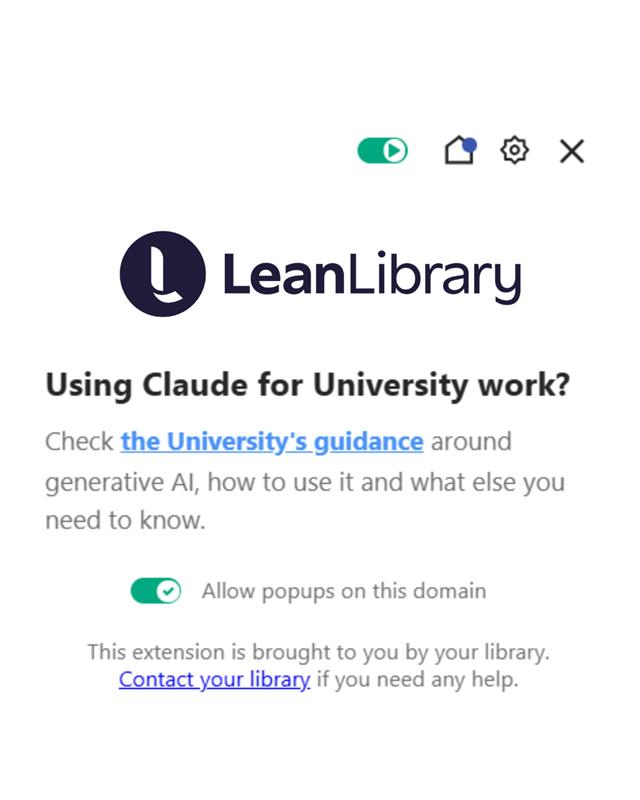
An example of an Assist Message which directs students to Claude guidance
Many students want help using AI responsibly but don’t know where to turn. Librarian Futures Part IV shows students are far more likely to trust an AI tool if it’s recommended by their library, yet they rarely receive that guidance.
One way for librarians to teach students how to use AI tools effectively is by directing them to free, trusted courses on AI digital literacy. For example, the Sage Campus and Lean Library integration surfaces the short online course, The Art of ChatGPT Interactions, to students and researchers when they are in locations within the OpenAI.com domain. The course was designed by AI expert Dr Leo. S Lo, Dean of the College of University Libraries & Learning Sciences at the University of New Mexico.

The Art of ChatGPT Interactions online short course, designed by AI expert Dr Leo. S Lo
This means students can learn about using AI effectively, improve their prompt engineering and achieve outcomes for their studies and research, without their workflow being interrupted. The library recommending free, trusted courses to students, created by librarians, mitigates the risk of the students picking up incorrect guidance as there are multiple AI courses available. This aims to reduce student stress and improve AI and research outcomes, whilst positioning the library as the go-to source for AI guidance.
Find out more about the Sage Campus AI course and how University of Phoenix have combined Lean Library‘s iFraming technology with Springshare’s LibGuides integration.
A fascinating finding from the report is that 27% of students wouldn’t look to anyone at their institution for AI guidance—more than those who would turn to a librarian (17%). Libraries have written multiple AI guides and resources for students, but how can they make sure they’re being shown to students at the point-of-need and not hidden on a library website?
With Lean Library, Library Guides or LibGuides (via Lean Library’s integration with Springshare), onboarding and instructional materials can be deployed on any academic resource or website to reach users right when they need it. This means the guidance is visible on sites such as Google Scholar, publisher websites, or even ChatGPT, rather than students searching for it.
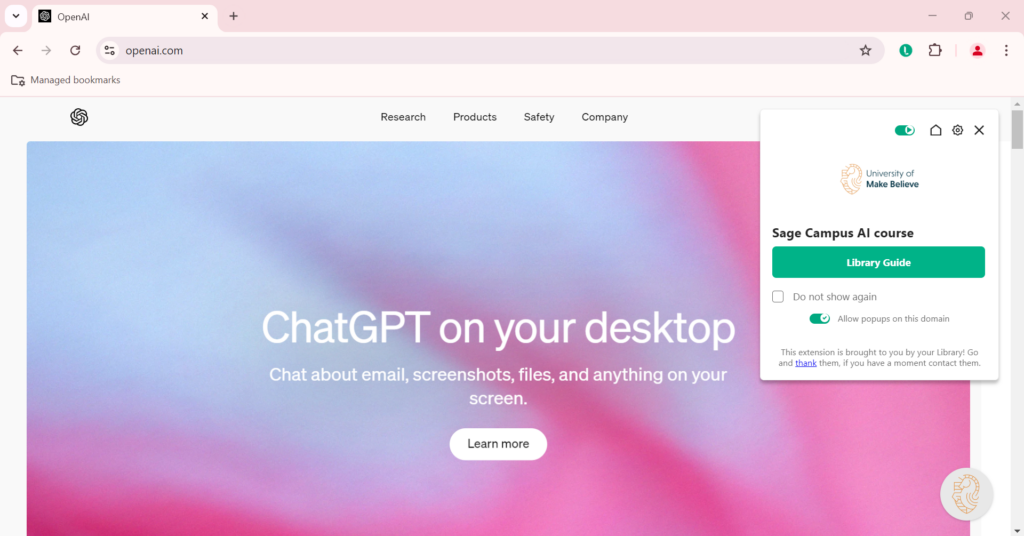
An example of Lean Library surfacing a Library Guide directing students to the Sage Campus AI course
Check out how Utah State University have embedded LibGuides in student workflows, increasing usage of a LibGuide by 450%.
Librarian Futures Part IV highlights that one of the few areas where students do turn to librarians is for getting access to resources—something Lean Library excels at. By removing barriers to access and improving discoverability of legitimate, library-provided materials, Lean Library helps students spend less time hitting paywalls and more time doing meaningful work.
Streamlining access has many positive benefits including reducing academic stress, especially for students juggling deadlines and unclear institutional AI policies. University of Hertfordshire adopted Lean Library to make it easier for students to find and access both library-subscribed materials and Open Access resources.
“There’s the risk if you don’t provide easy routes to access things legally, then potentially people may decide to do things via routes that increase risk to the institution—things that open you up to a cybersecurity risk. It was also part of a risk management strategy: let’s make this as easy as possible so they don’t try and do something that opens their own device to risk or an institutional device.”
Rebecca Scott, Project Manager, University of Hertfordshire
Read more about University of Hertfordshire’s case study.
Finally, librarians can feel empowered to personalize their presence with the Lean Library Library Chat (LibChat) feature. The LibChat integration allows librarians to deploy their live chat service to patrons. This can be very helpful for students when they face a challenging situation and want targeted support without having to go to the library’s contact page to find it.
As 60% of students said they would rather hear from the library only ‘when and where they need it’, and 53% of GenZers say they feel more comfortable communicating online than in person, this kind of humanized, live-action support can reestablish the librarian as a trusted partner in learning.
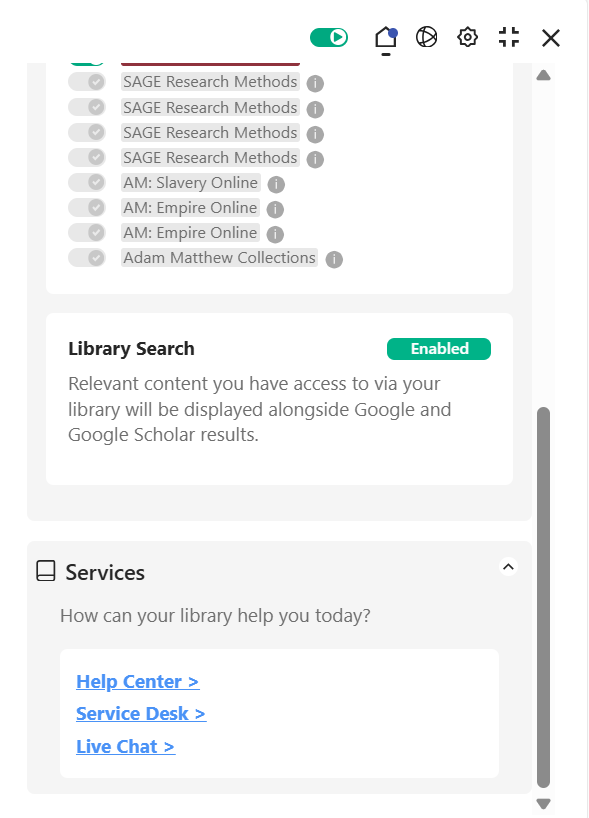
An example of a Lean Library pop-up showing students directed to Library Chat, Services Desk and Help Centre
The Librarian Futures Part IV report makes it clear: students trust their librarians, but they don’t always think to turn to them. Lean Library helps change that. By embedding the library where it’s needed most—in the student workflow and on AI sites students use to begin their research—Lean Library not only supports academic success but also reduces stress and builds confidence in the AI age.
Let’s meet students where they are and bring AI guidance to them directly in their workflow, rather than have students look for AI access and support elsewhere.
“It is important to balance the benefits of AI with responsible usage, both in our professional practice and in effectively guiding students through this rapidly changing landscape. By promoting digital literacy, librarians play a key role in helping students effectively use and assess AI-generated content in their academic work and beyond.”
PJ Purchase, University Librarian and Director of University Library, University of Phoenix
Find out more about Lean Library.
If you’d like to hear more or receive a product demo, get in touch.
Regent College London adopts Lean Library to Maximise Student Success July 24, 2025Regent College London (RCL) are partnering with Technology from Sage to implement Lean Library. This will provide the college’s 10,000 students with streamlined access to library holdings.
RCL offers Higher National Certificates, foundation year routes, foundation degrees, bachelor’s degrees, top-up degrees and master’s degrees in a wide array of subjects, with a focus on employability and developing in-demand skills. The RCL community welcomes students with varying degrees of qualifications and levels of confidence using technology. Students had previously experienced issues with accessing library resources for their courses. Lean Library provides a solution by taking the onus off students, ensuring they have streamlined access to centralised course materials and other library resources – saving students time and money.
Reflecting on this exciting partnership, Chris Baldwin, Director of Digital Academic Strategy at RCL, commented:
“Access to the right learning materials at the right time is essential for student success. We’re excited to launch this partnership, which will empower our students and enrich the overall educational experience we provide.”
Adopting Lean Library will integrate library collections and services directly into student online workflows via the browser extension. RCL’s implementation of Lean Library will alleviate research obstacles for students and provide them with access to both library-subscribed materials and Open Access papers at the point-of-need.
By adopting Lean Library, students will have simplified access to course materials and will be able to navigate clearly structured resource lists for their studies. This aligns with RCL’s commitment to put the student experience first and at the heart of teaching and learning.
If you’d like to hear more or receive a product demo, get in touch.
AI in Libraries: July Edition July 15, 2025At Technology from Sage we believe that the right technology can remove barriers to knowledge. The AI in Libraries feature shares the latest AI developments for academic librarians and worldwide projects.
Read on for July’s edition, collated by Rajeh Shaikh, Product Manager at Sage.
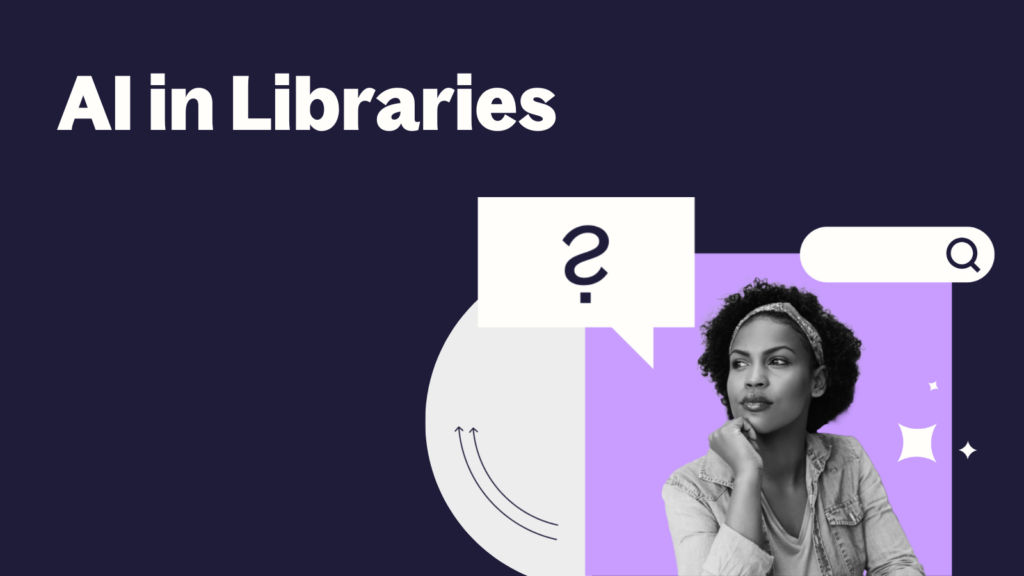
On June 25, 2025, Wiley announced a new partnership with AI search platform Perplexity to bring its academic content (from nursing and business to engineering and education) into a conversational, AI-powered search experience. As Perplexity’s first education partner, Wiley ensures users get transparent, cited results from trusted sources. Pilots are already running at Texas A&M and Texas State, with more universities to follow. The initiative reflects Wiley’s commitment to responsible AI and student-first innovation.
Johns Hopkins Libraries announced ongoing initiatives to explore the use of artificial intelligence in academic research and learning. A new internal task force is examining ethical, privacy-conscious ways to incorporate generative AI tools, focusing on how they can support student success, enhance search and discovery, and respect scholarly values. The team is also hosting open conversations to shape a transparent, inclusive approach.
University of Oxford announced the launch of the Entente CordIAle Paris-Saclay – Oxford-Cambridge AI Initiative, a major international partnership focused on ethical, sovereign, and world-class AI. This initiative spans collaborative research, joint thesis supervision, and industry engagement. Academic libraries of institutions involved in this partnership will be central to its success, managing AI-generated data, supporting research, and addressing ethical questions in scholarly communication.
Congratulations to our July Library of the Month, University of Leeds! July 11, 2025
Each month we select a Library of the Month to honor libraries who have been using our library technologies in interesting and innovative ways, driving usage of library content with Lean Library.
The winning library will be awarded a prize to share amongst their team or a donation to a charity of their choice as a way for us to say thank you.
University of Leeds, based in Yorkshire, United Kingdom is part of the Russell Group of research-intensive universities and are renowned globally for the quality of our research and teaching. They educate nearly 37,000 students and their alumni network has grown to over 320,000 worldwide.
We’ve awarded them our Library of the Month Award for July, as they are great advocates for Lean Library, and have utilized Assist Messages to convey important library guidance to students. For example, Assist Messages have been set up on Perplexity, Claude, Copilot and ChatGPT, with nearly 8,500 views across the messages – providing students with guidance at the time they need it.
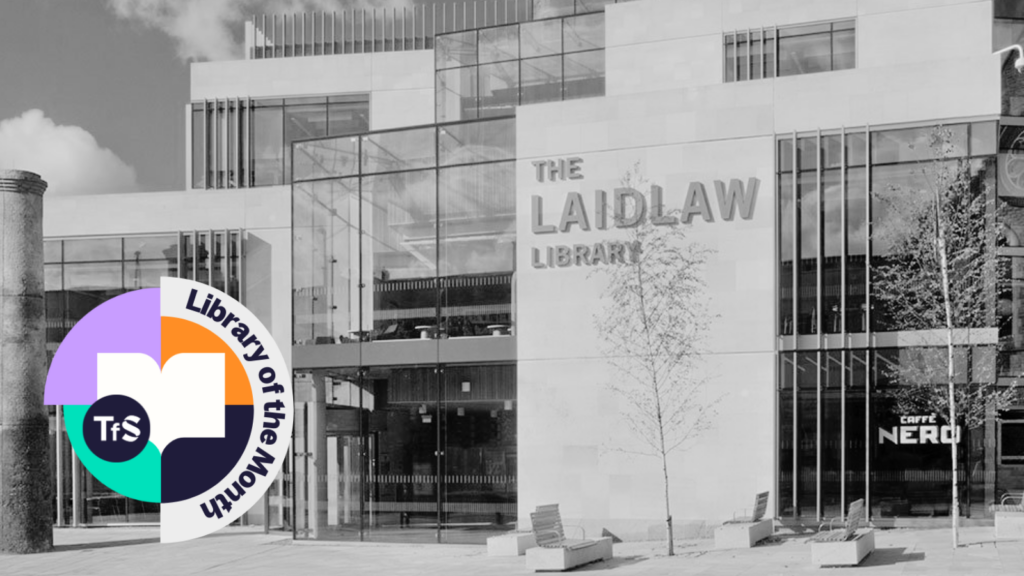
We asked Alison Hazelaar, Access & Acquisitions Manager: Metadata & Discovery at University of Leeds Libraries to tell us more about what winning Library of the Month means:
“We are thrilled to be Technology from Sage’s Library of the Month! It’s wonderful to have Lean Library helping our users connect easily with the content they need both on- and off-campus. It’s like a little bit of library magic happening behind the scenes.”
Discover our previous winners below:
Could your library be next?
Join us next month to see who’s won.
Lean Library Launches New ‘One-Click to PDF’ Feature To Instantly Unlock Full-Text Content July 8, 2025We are thrilled to announce the initial launch of Lean Library‘s One-Click to PDF feature, with the next phase launching later this year. The initial launch offers users one-click access to the full-text PDF of academic content via a widget on the library’s discovery layer — without requiring users to download the Lean Library browser extension.
Read on to learn everything you need to know about this exciting development, what’s coming in the next phased release, and how it benefits librarians, students and researchers.
Accessing library-subscribed scholarly resources has long been a challenge for researchers and students, especially as the majority of content discovery starts outside the library environment. When searching for content online, it can take students and researchers an average of 12 clicks to reach a full-text PDF of an article, costing them valuable time.
Lean Library is a trusted tool in streamlining access to library resources and delivering library services directly to users in their online workflows through its browser extension. Lean Library previously saved users up to 3 minutes per content search by streamlining authentication and access to library-subscribed content on publisher sites, where users then click to the desired content.
While this remains at the core of Lean Library’s offering, the new One-Click to PDF feature expands on this by instead taking users direct to the full-text article PDF (or HTML equivalent) in just one click. Furthermore, it does this without the need for the browser extension via a ‘Get PDF’ widget that can be injected on the library discovery system.
As a pioneer in access solutions for libraries, this development underscores Lean Library’s commitment to enhancing the visibility and usage of library resources. Whether through the trusted browser extension or the new ‘Get PDF’ widget, Lean Library removes barriers to knowledge by streamlining academic workflows and strengthening the library’s central role in supporting students and researchers.
This initial launch provides Lean Library customer institutions with an injectable ‘Get PDF’ widget to embed on their library discovery layer. The widget is powered by an integration with GetFTR, which ensures high-quality and reliable linking with all major publisher content. It detects in real-time where an article PDF is available and displays a ‘Get PDF’ button that instantly downloads the article PDF for users in just one click. If a PDF isn’t available, users instead see a ‘Get Article’ button, which takes them to the publisher’s HTML version or landing page as the next best option.
This streamlines content discovery for students and researchers and saves them time from having to navigate between library discovery layers and publisher sites to get their hands on the actual full-text.
Get PDF button example:
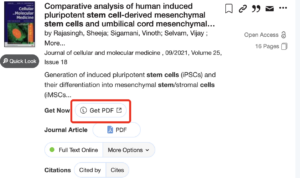
Get article button example:
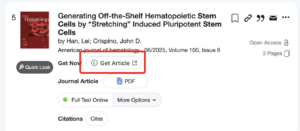
The widget is initially available for Ex Libris Primo and Summon library discovery services. It will next support OCLC Worldcat and EBSCO EDS. Customer librarians will be able to access engagement metrics on click-through rates and successful downloads via the Lean Library dashboard shortly after launch.
While the integration with GetFTR offers reliable PDF linking for all major publisher content, we plan to rapidly expand content coverage in the next phases of development. In addition, the ‘One-Click to PDF’ button will be made available within the Lean Library browser extension to streamline workflows of students and researchers who bypass the library discovery layer entirely and who prefer to start their content discovery online. Furthermore, we are looking to extend this to multi-search platforms like Google Scholar for the button to appear next to academic content in users’ search results — ultimately to meet students and researchers in their different preferred workflows.
As Lean Library continues to grow and develop, we remain committed to streamlining the research experience by amplifying the value of academic libraries. If your institution wants to learn about, contact us.